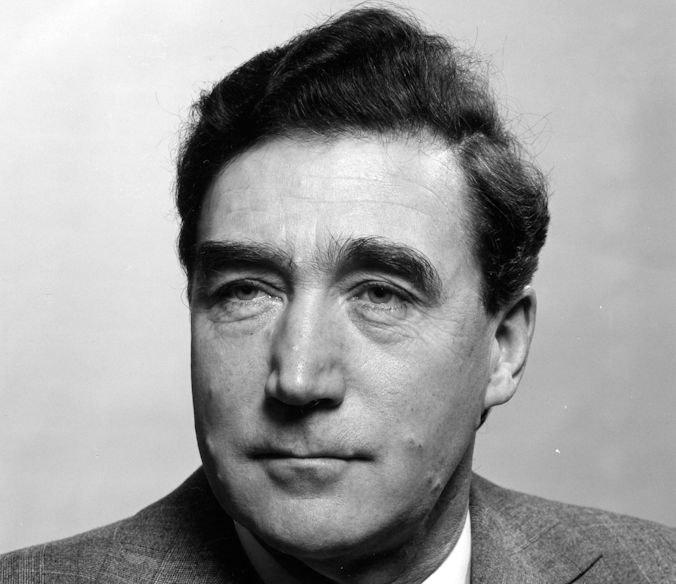In Memoriam: Professor Leslie Green

It is with sadness that we have to report the passing of Professor Leslie Leonard Green CBE, Emeritus Professor of Physics. Leslie died peacefully on 25th February 2018, aged 92, at the Great Western Hospital, Swindon. He will be greatly missed by his wife Terry, family and friends. Leslie was inspirational leader who established a world-renowned Nuclear Physics research cluster in Liverpool.
Leslie took Natural Sciences (part 1) followed by Physics (part 2) at Cambridge, where he graduated with a 2(i). His PhD was on tertiary fission – the nucleus breaks up into 3 bits rather than the usual 2 bits. When he got to Liverpool in 1949 he worked on the 1.0 MV Cockcroft-Walton accelerator with John Willmott. They worked on characterising resonances in light nuclei using high efficiency NaI(Tl) gamma-ray detectors. Meanwhile they worked on a plan to finance a new Van-de-Graff accelerator at Liverpool to replace the aging cyclotron that Chadwick had financed in the 1930s with his Nobel Prize money. They were very successful and the foundations were laid in 1960 for buildings to house a High Voltage 5 MV EN tandem Van-de-Graff. The accelerator arrived in 1961 and experiments started in 1962.
Leslie was appointed to a Chair of Experimental Nuclear Physics at Liverpool in 1964. He led a rapid expansion of the Nuclear Physics Group with eight members of academic staff appointed to support him. He had a remarkable ability to resource funds for the work in Liverpool. The tandem lab became very well resourced with advanced apparatus, electronics and early computers for data taking. Under his leadership the group discovered how to use gamma-rays to measure unique quantum values for the excited states of nuclei which was a major experimental break-through in providing, for the first time, reliable data for the various current theories of nuclear behaviour. The group became the world leaders in the nuclear spectroscopy of (s-d shell, and later f-p shell) nuclei in the mass range 21 to 70.
Leslie continued his work to secure funding for the future of Nuclear Physics using accelerated heavy atoms beams which had become very fashionable. He was part of a group of leading UK physicists who persuaded the Science Research Council to budget to build a very ambitious 30 MV tandem van de Graff to accelerate “Heavy Ions”. Funding was agreed in principle but the location of the Nuclear Structure Facility (NSF) was not decided at this point. He was very influential in the decision to build this accelerator at Daresbury Laboratory, where he became director in 1981.
The NSF at Daresbury raced ahead to very rapidly become one of the leading nuclear physics laboratories in the world. The world leading work included:
- Large escape suppressed spectrometer (ESS) gamma-ray arrays were designed and built which have revolutionised how nuclear structure research is done worldwide.
- Superdeformed nuclei were discovered experimentally..
- Fast spinning nuclei were discovered to change their shape as their spin increased.
- The use of recoil separators in conjunction with ESS arrays for nuclear spectroscopy far from stability was pioneered.
- Innovative techniques in hyperfine laser spectroscopy were developed.
- An ISOL (Isotope Separation On-Line) facility was built with the addition of a dilution refrigerator to polarise nuclei at milli-Kelvin (10-3K) temperatures.
- International collaborations continued with collaborators from the Niels Bohr Institute in Denmark and new collaborations started with French, Italian, Greek and German laboratories.
As Director of Daresbury Laboratory, Leslie also had responsibility for the Synchrotron Radiation Facility (SRF). Daresbury became the originator of many ground-breaking innovations which have been adopted by many other laboratories all over the world.
Outside of physics Leslie enjoyed walking, locally around West Kirby where he lived, often on Caldy and Thurstaston hills or along the beaches of the Dee Estuary and on the coast of the Lleyn peninsula. There were also frequent trips to Snowdonia either with the family or with the physics department walking group. He was a keen squash player and played regularly in the department squash ladder, even proudly reaching the top of the ladder after two weeks of altitude training on a family walking holiday in Switzerland!
His other passion was classical music regularly attending concerts at the Liverpool Philharmonic and opera, enjoying trips to Welsh and Scottish opera. After his retirement he was a regular attendee at Glyndebourne, often in the company of friends and fellow physicists. He had a lifelong interest in history and was an avid reader.
At university he played cricket and always followed Leicestershire and Leicester City. He was never happier than when Leicester City were higher than Everton (his son in law and grandson’s team) in the league tables!
Leslie and Terry enjoyed entertaining and their dinner parties are still fondly remembered by those who were in the department at the time. In retirement they travelled to see friends usually with an attached opera trip or gourmet meal and took regular driving holidays through France, always including some Michelin starred restaurant meals.
Their house in West Kirby had a large garden which they enjoyed, Leslie indulging his passion for azaleas, camellias & rhododendrons which thrived in the mild climate. Leslie had two children and four grandchildren. None followed him into Physics, but three went into medicine & one to engineering so he passed on a definite science bias!
The funeral will take place at South Oxfordshire Crematorium on Friday 23rd March, at noon. The family has asked for no flowers, but suggested donations towards a physics prize in his memory, c/o Geoffrey Church and Co, Churchgate, The Broadway, Thatcham, RG19 3HX. Tel: 01635 868444.